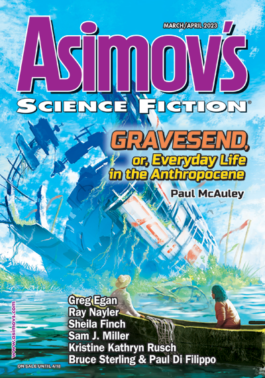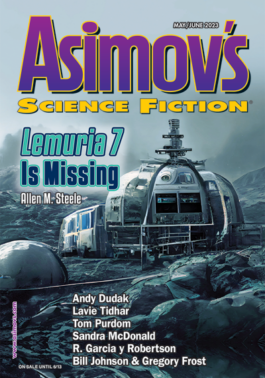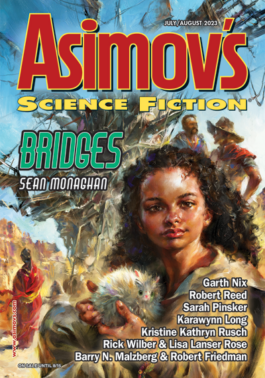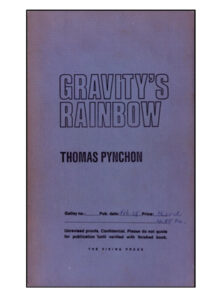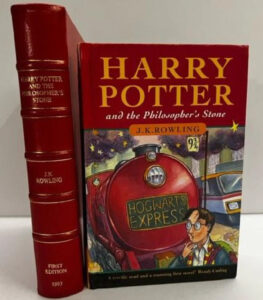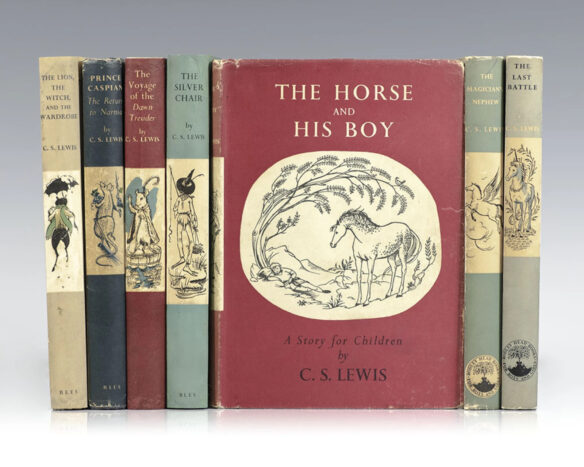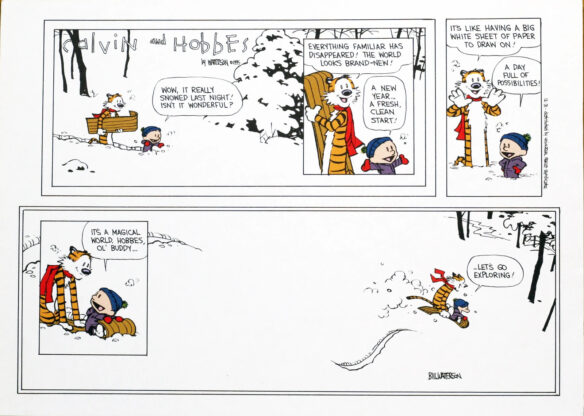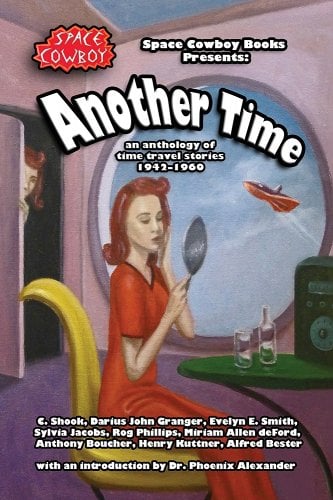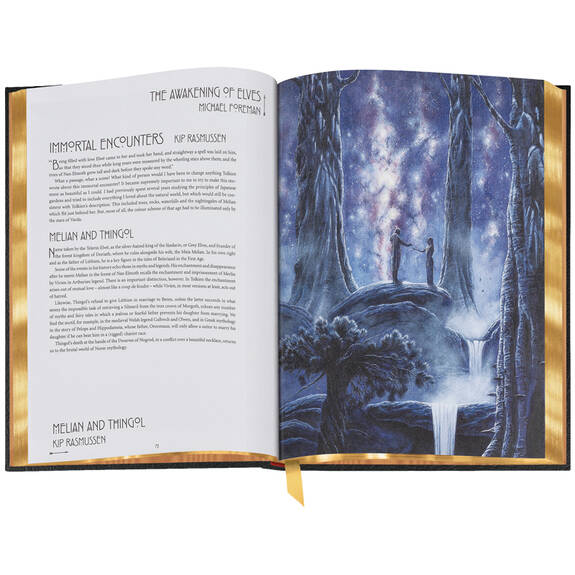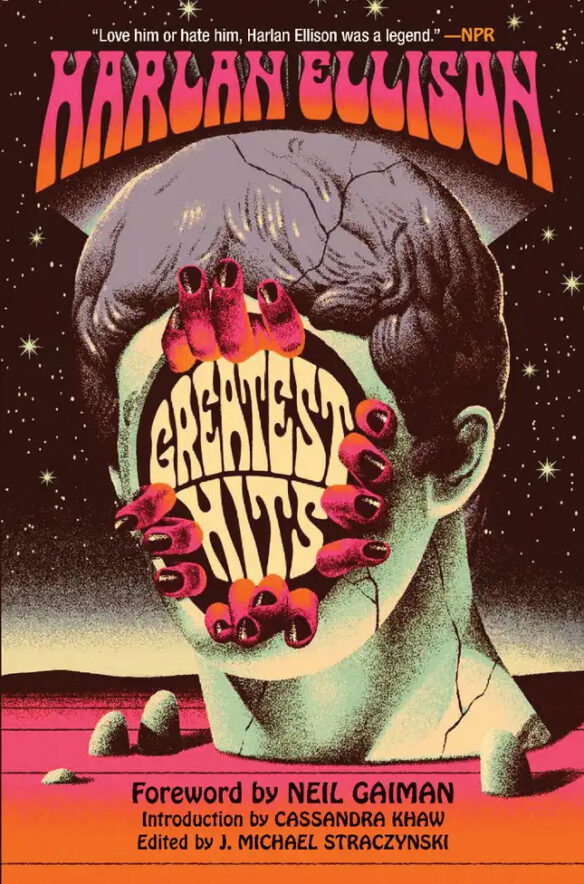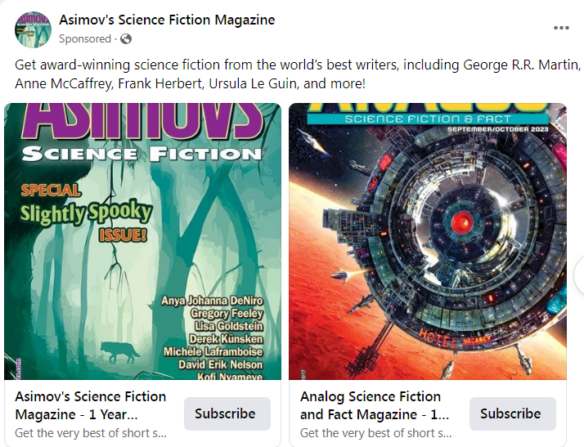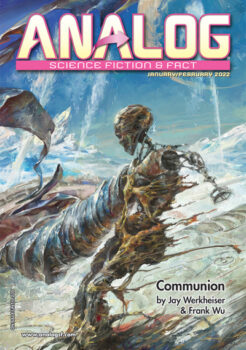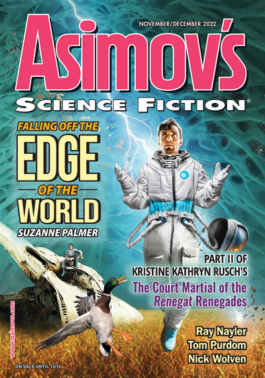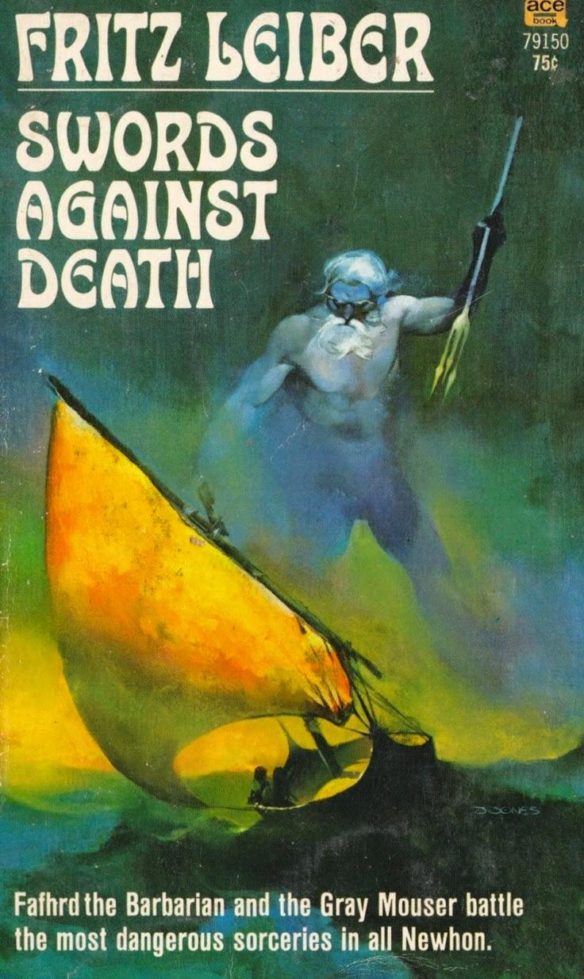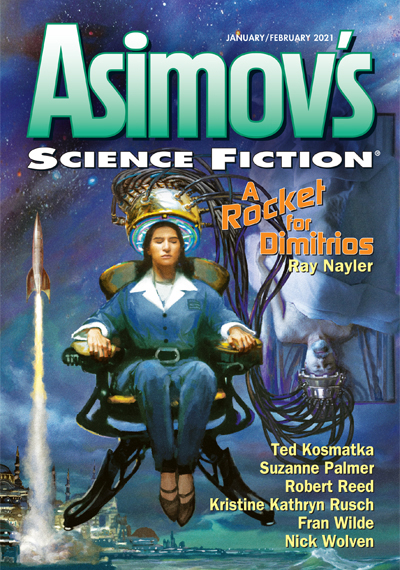(1) YOU PAYS YOUR MONEY AND YOU TAKES YOUR CHANCE. The Sports Geek proves to be rather clueless in its attempt to set the “2024 Hugo Awards Odds, Predictions, Best Bets”. But it made me click, which is a win for them, right? Here’s one of their lines.
The following Hugo Awards 2024 odds are courtesy of BetUS:

Why wouldn’t the front-runner among bettors be Vajra Chandrasekera’s The Saint of Bright Doors, which just won the Nebula? But for my own prediction I’m going with Emily Tesh’s Some Desperate Glory, partly based on the buzz, and partly my having read the finalists. (Actually reading the contenders – that’s cheating, isn’t it?)
(2) META ONLY RESPONDS TO A CREDIBLE THREAT. Engadget reports litigation that ironically explains “How small claims court became Meta’s customer service hotline”.
Last month, Ray Palena boarded a plane from New Jersey to California to appear in court. He found himself engaged in a legal dispute against one of the largest corporations in the world, and improbably, the venue for their David-versus-Goliath showdown would be San Mateo’s small claims court.
Over the course of eight months and an estimated $700 (mostly in travel expenses), he was able to claw back what all other methods had failed to render: his personal Facebook account.
Those may be extraordinary lengths to regain a digital profile with no relation to its owner’s livelihood, but Palena is one of a growing number of frustrated users of Meta’s services who, unable to get help from an actual human through normal channels of recourse, are using the court system instead. And in many cases, it’s working.
Engadget spoke with five individuals who have sued Meta in small claims court over the last two years in four different states. In three cases, the plaintiffs were able to restore access to at least one lost account. One person was also able to win financial damages and another reached a cash settlement. Two cases were dismissed. In every case, the plaintiffs were at least able to get the attention of Meta’s legal team, which appears to have something of a playbook for handling these claims.
Why small claims?
At the heart of these cases is the fact that Meta lacks the necessary volume of human customer service workers to assist those who lose their accounts. The company’s official help pages steer users who have been hacked toward confusing automated tools that often lead users to dead-end links or emails that don’t work if your account information has been changed. (The company recently launched a $14.99-per-month program, Meta Verified, which grants access to human customer support. Its track record as a means of recovering hacked accounts after the fact has been spotty at best, according to anecdotal descriptions.)
Hundreds of thousands of people also turn to their state Attorney General’s office as some state AGs have made requests on users’ behalf — on Reddit, this is known as the “AG method.” But attorneys general across the country have been so inundated with these requests they formally asked Meta to fix their customer service, too. “We refuse to operate as the customer service representatives of your company,” a coalition of 41 state AGs wrote in a letter to the company earlier this year….
(3) TESTING FOR EMPATHY. [Item by Steven French.] “The Stormtrooper Scandal review – inside the Star Wars art sale that wrecked lives” in the Guardian is a review of a tv show that aired on BBC2 (available via iPlayer) about selling images of customized Star Wars Stormtrooper helmets as Non-Fungible Tokens and my eye was caught by the opening paragraph:
Here’s a tricky ethical conundrum – how much can you command yourself to care about the suffering of a monumental dickhead? Do you say a breezy “Not at all!” and move on with your day? Do you say “I have limited resources and prefer to expend them on non-dickhead entities, ta?” Do you say “No dickhead is all dickhead, just as none of us is entirely free of dickheadery ourselves – thus our common humanity demands of us always a degree of empathy and compassion?” Have a think, then test yourself again at the end of 90 minutes of The Stormtrooper Scandal. Send the results on a postcard to the usual address…
(4) DIGITAL LIBRARY PULLS DOWN BOOKS AS LITIGATION CONTINUES. “Internet Archive forced to remove 500,000 books after publishers’ court win” – Ars Technica is counting.
As a result of book publishers successfully suing the Internet Archive (IA) last year, the free online library that strives to keep growing online access to books recently shrank by about 500,000 titles.
IA reported in a blog post this month that publishers abruptly forcing these takedowns triggered a “devastating loss” for readers who depend on IA to access books that are otherwise impossible or difficult to access.
To restore access, IA is now appealing, hoping to reverse the prior court’s decision by convincing the US Court of Appeals in the Second Circuit that IA’s controlled digital lending of its physical books should be considered fair use under copyright law. An April court filing shows that IA intends to argue that the publishers have no evidence that the e-book market has been harmed by the open library’s lending, and copyright law is better served by allowing IA’s lending than by preventing it.…
… In an open letter to publishers signed by nearly 19,000 supporters, IA fans begged publishers to reconsider forcing takedowns and quickly restore access to the lost books.
Among the “far-reaching implications” of the takedowns, IA fans counted the negative educational impact of academics, students, and educators—”particularly in underserved communities where access is limited—who were suddenly cut off from “research materials and literature that support their learning and academic growth.”
They also argued that the takedowns dealt “a serious blow to lower-income families, people with disabilities, rural communities, and LGBTQ+ people, among many others,” who may not have access to a local library or feel “safe accessing the information they need in public.”
“Your removal of these books impedes academic progress and innovation, as well as imperiling the preservation of our cultural and historical knowledge,” the letter said.
“This isn’t happening in the abstract,” Freeland told Ars. “This is real. People no longer have access to a half a million books.”…
… Asked for comment, an AAP spokesperson provided Ars with a statement defending the takedown requests. The spokesperson declined to comment on readers’ concerns or the alleged social impacts of takedowns.
“As Internet Archive is certainly aware, removals of literary works from Internet Archive’s transmission platform were ordered by a federal court with the mutual agreement of Internet Archive, following the court’s unequivocal finding of copyright infringement,” AAP’s statement said. “In short, Internet Archive transmitted literary works to the entire world while refusing to license the requisite rights from the authors and publishers who make such works possible.”…
(5) GRIFTING FOR DOLLARS. Lucidity threatens “I Will Fucking Piledrive You If You Mention AI Again”. God this is witty – and very informative!
The recent innovations in the AI space, most notably those such as GPT-4, obviously have far-reaching implications for society, ranging from the utopian eliminating of drudgery, to the dystopian damage to the livelihood of artists in a capitalist society, to existential threats to humanity itself.
I myself have formal training as a data scientist, going so far as to dominate a competitive machine learning event at one of Australia’s top universities and writing a Master’s thesis where I wrote all my own libraries from scratch in MATLAB. I’m not God’s gift to the field, but I am clearly better than most of my competition – that is, practitioners like myself who haven’t put in the reps to build their own C libraries in a cave with scraps, but can read textbooks, implement known solutions in high-level languages, and use libraries written by elite institutions.
So it is with great regret that I announce that the next person to talk about rolling out AI is going to receive a complimentary chiropractic adjustment in the style of Dr. Bourne, i.e, I am going to fucking break your neck. I am truly, deeply, sorry.
I. But We Will Realize Untold Efficiencies With Machine L-
What the fuck did I just say?
I started working as a data scientist in 2019, and by 2021 I had realized that while the field was large, it was also largely fraudulent. Most of the leaders that I was working with clearly had not gotten as far as reading about it for thirty minutes despite insisting that things like, I dunno, the next five years of a ten thousand person non-tech organization should be entirely AI focused. The number of companies launching AI initiatives far outstripped the number of actual use cases. Most of the market was simply grifters and incompetents (sometimes both!) leveraging the hype to inflate their headcount so they could get promoted, or be seen as thought leaders1.
The money was phenomenal, but I nonetheless fled for the safer waters of data and software engineering. You see, while hype is nice, it’s only nice in small bursts for practitioners. We have a few key things that a grifter does not have, such as job stability, genuine friendships, and souls. What we do not have is the ability to trivially switch fields the moment the gold rush is over, due to the sad fact that we actually need to study things and build experience. Grifters, on the other hand, wield the omnitool that they self-aggrandizingly call ‘politics’2. That is to say, it turns out that the core competency of smiling and promising people things that you can’t actually deliver is highly transferable….
(6) TODAY’S BIRTHDAY.
[Compiled by Paul Weimer.]
June 22, 1947 — Octavia Butler. (Died 2006.)
By Paul Weimer: The first Octavia Butler story I encountered caused me not to read more of her work for over a decade afterwards.
The year was 1984. I was a young SF reader. Isaac Asimov’s SF magazine was one of the things I read as part of my SF education. June 1984 had a striking cover image for Octavia Butler’s story Bloodchild that drew my eye right away. I had to Know More!


But then I read the story itself. A hard-hitting Butler with an emphasis on biology, and the idea of human men becoming part of a life cycle of aliens’ breeding, I was, to say the least, a little traumatized at the idea of someone being a host for parasitic alien eggs! I got right away the parallels Butler was making and as a reader I was poleaxed.
I decided that Butler was Not for Me (or, Too Much For Me) and did not read her again for years.
Finally, I was persuaded to give Butler another go, and I picked up Wild Seed. This experience was completely and rather different. I was absolutely struck by the power and grace of her imagination, her consummate writing skill, and (yes) her ability to make me feel. I didn’t mind that I had started the series out of order, I was sucked in right away and was absorbed by the book, its pair of main characters, and the world Butler has made.
I then went on to other books in the Patterrnist sequence, the Parable novels, and in general, steadily consumed her oeuvre ever since. One of the best SF writers of all time? I don’t think that’s a stretch. Taken from us too soon? Absolutely yes, no question. (Recall that she won a MacArthur Award Genius grant, in addition to her SFF awards and nominations)
And yes, I have given Bloodchild another read…and yes, it STILL freaks me out. Some things never do change.
While I think her Parable books are the most timely books for today (and the ones I would push into the hands of interested readers), my favorite Octavia Butler piece might not be a novel at all, but rather the short story “Speech Sounds”. It focuses on her biological SF concerns, describing the aftermath of a plague which renders nearly everyone unable to speak. For those who still can talk…life is not precisely pleasant in the post-plague Los Angeles. But the bonds and the character development and worldbuilding packed into the short space of the story show just what Butler could do as a writer.
For those interested, I recount in even more detail my experience with Octavia Butler and her work in an essay in the anthology Luminescent Threads: Connections to Octavia E. Butler, edited by Alexandra Pierce and Mimi Mondal (Twelfth Planet Press, 2017). One of the weirdest things I’ve ever had as a SFF person is someone wanting me to sign my essay in their copy of the book. I attribute that to the power Octavia Butler has, not mine own modest talents.
(7) COMICS SECTION.
- Off the Mark predicts motion detecting.
- The Argyle Sweater broke a rule.
- Bizarro shows C3 is really PO’d.
- Carpe Diem knows a secret about AI.
- Tom Gauld meets the enforcers.
(8) JOURNEY PLANET. Journey Planet’s Issue 82 – “Be The Change” is out. Fortunately, Chris Barkley thought File 770 would be interested in knowing.
Paul Weimer, Allison Hartman Adams, James Bacon, and Chris Garcia bring you a look at WorldCons and what things might be done to bring positive change! There’s discussion of the Recent Hugo Controversies, about changed needed in governance, proposals that will be sent on to the WorldCon Business Meeting, and much more!

(9) UNDESERVED DOOM, THAT’S WHO. CBR.com names “10 Doctor Who Characters Who Deserved Better Fates”.
…Doctor Who has a habit of giving viewers very sympathetic and likeable characters and then killing them off just as audiences have fully embraced them. This raises the stakes for Doctor Who fans, but it sometimes results in characters (particularly female characters) being killed in order to further the Doctor’s storyline and make them sad. Many of these characters got meaningful deaths, but there’s no denying that too often their deaths were more about the Doctor, or his companions or enemies, than truly about them….
Here’s one of the heartbreakers:
8. Chantho Never Got a Chance to Develop Past ‘Utopia’
Chantho (Chipo Chung) was an absolutely adorable alien woman. She had a fascinating quirk to her language where she had to say the first and last syllables of her name at the beginning and end of every sentence, and not doing so was like swearing to her. She and Martha (Freema Agyeman) bonded over this, and they could have had a great friendship if not for what happened next.
When kindly old Professor Yana turned out to be the evil Master, he killed the frightened Chantho with an electrical wire. She did, however, manage to get a shot off at him in her last moments, causing the Master to regenerate. It’s still a shame, however, that Chantho died, as Doctor Who has never had an alien companion like her before, and she could have been something intriguingly different.
(10) CHAPLIN, ALPERT, HENSON – WHO’S NEXT? Gizmodo alerts fans that “The Jim Henson Company’s Iconic Studio Is Now Up for Sale”. It’s a Hollywood property with quite a history. We hope it isn’t fated to be developed into another 600-unit apartment building.
According to a new report from the Wrap, the Jim Henson Company is selling its Los Angeles studio lot at 1416 La Brea Avenue as “part of a much longer-term strategy” to merge an undisclosed future location with its Jim Henson Creature Shop in Burbank, California. The building has headquartered the company since 2000, shortly after the release of the Sci-Fi Channel’s Farscape and Muppets From Space.
Before becoming ground zero for all things felt and googly-eyed, the historic lot served as Charlie Chaplin Studios from 1917-1953; it was then taken over by Red Skelton, whereupon it became the shooting location for multiple classic TV series, including The Adventures of Superman and Perry Mason. Grander still, the building went on to house A&M Studios from 1966-1999, where Nine Inch Nails recorded The Downward Spiral and U.S.A for Africa recorded charity single “We Are the World.”
(11) PLAYING TO SURVIVE. NPR witnesses “How a board game can help vulnerable communities prepare for catastrophic wildfires”.
As climate change increases the intensity of wildfires, experts are struggling to prepare vulnerable communities for potential catastrophes. One new approach is a community-wide board game that tests resilience….
KATHERINE MONAHAN, BYLINE: About 40 people are gathered in the Tomales Town Hall. They’re sitting around folding tables covered with giant maps of the region, and each map is a game board. The point of the game – to safely evacuate this remote area as wildfires threaten. First, residents calculate whether they start with a bonus or a penalty.
UNIDENTIFIED PERSON #3: Do you have an evacuation plan?
MONAHAN: They add points for how prepared they are in real life, like by having a go bag of essentials or being signed up to receive emergency alerts on their phones. They subtract points for factors that could slow them down, like having extended family or multiple pets. Next, they choose their game pieces….
… MONAHAN: Maiorana says residents must think about these things ahead of time. It can mean life or death. Deadly fires have raged through California in recent years, including the Camp Fire, which killed 85 people in Paradise, another isolated town. Tiny, coastal Tomales has only two main roads in and out.
MAIORANA: My secret agenda with this game is actually to get people talk to one another….
(12) SPEAKER TO ANIMALS. [Item by SF Concatenation’s Jonathan Cowie.] In this week’s Science journal there is an article by Carlo G. Quintanilla on how SF helped him become a better science communicator. He is a health science policy analyst at the National Institute of Child Health and Human Development. “Science and fiction”.
As I stepped out of the punishing Arizona heat and into the cool air-conditioned halls of the convention centre, I saw a sea of costumed attendees. Some wore elaborate steampunk attire; others portrayed their favourite Marvel or Star Wars characters. “Why did I agree to this?” I thought as I made my way to the room where I’d be giving a talk about the science behind the classic Dune books by Frank Herbert. I had been struggling for years to find new ways to communicate science to a broad audience. My hope was to inspire admiration and awe of what science can teach us about the world through the imaginative lens of science fiction. At first I felt like an imposter at this pop culture convention. Then I saw the audience’s excitement…
(13) LEST DARKNESS FALL. Henri Barde refutes the wonderful vision in “Space-Based Solar Power: A Skeptic’s Take” at IEEE Spectrum.
… Space-based solar power is an idea so beautiful, so tantalizing that some argue it is a wish worth fulfilling. A constellation of gigantic satellites in geosynchronous orbit (GEO) nearly 36,000 kilometers above the equator could collect sunlight unfiltered by atmosphere and uninterrupted by night (except for up to 70 minutes a day around the spring and fall equinoxes). Each megasat could then convert gigawatts of power into a microwave beam aimed precisely at a big field of receiving antennas on Earth. These rectennas would then convert the signal to usable DC electricity.
The thousands of rocket launches needed to loft and maintain these space power stations would dump lots of soot, carbon dioxide, and other pollutants into the stratosphere, with uncertain climate impacts. But that might be mitigated, in theory, if space solar displaced fossil fuels and helped the world transition to clean electricity…
…Despite mounting buzz around the concept, I and many of my former colleagues at ESA are deeply skeptical that these large and complex power systems could be deployed quickly enough and widely enough to make a meaningful contribution to the global energy transition. Among the many challenges on the long and formidable list of technical and societal obstacles: antennas so big that we cannot even simulate their behavior.
Here I offer a road map of the potential chasms and dead ends that could doom a premature space solar project to failure. Such a misadventure would undermine the credibility of the responsible space agency and waste capital that could be better spent improving less risky ways to shore up renewable energy, such as batteries, hydrogen, and grid improvements. Champions of space solar power could look at this road map as a wish list that must be fulfilled before orbital solar power can become truly appealing to electrical utilities….
(14) WHERE THEY’RE TUNING IN TO THE BOYS. JustWatch analyzed the reception of the latest season of The Boys to see how this release compared to the previous three seasons. They found that this season is the second most popular among global viewers, with season 2 ranking first in 89 countries on their Streaming Charts.
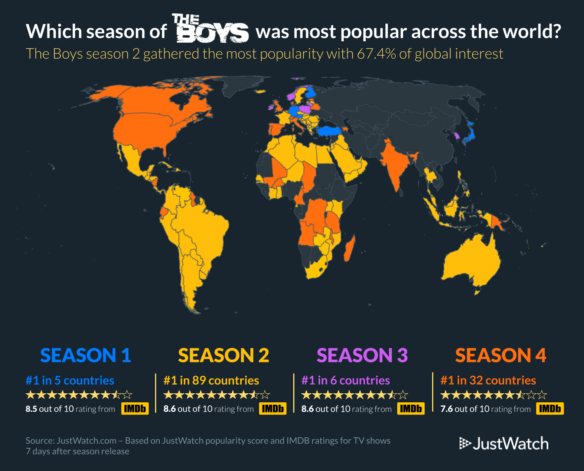
JustWatch created this report by pulling data from the week following the release of “The Boys”, and compared it to the previous three seasons. JustWatch Streaming Charts are calculated by user activity, including: clicking on a streaming offer, adding a title to a watchlist, and marking a title as ‘seen’. This data is collected from >40 million movie & TV show fans per month. It is updated daily for 140 countries and 4,500 streaming services.
(15) OOPS-EL. “Billy Zane teases ‘Superman’ Easter egg in Marlon Brando biopic” – Entertainment Weekly has the story. (Watch the Marlon Brando as Jor-El Superman outtake at the link.)
Billy Zane is set to play Marlon Brando in a new biopic — and the actor tells Entertainment Weekly that the project will briefly touch on the legendary film star’s time playing Kal-El’s Kryptonian dad in Superman.
In a conversation primarily focusing on his Lifetime movie Devil on Campus: The Larry Ray Story, the Titanic star reveals that he recently shot a last-minute addition to Waltzing with Brando. “We added this one little Easter egg for the credit sequence that we just shot a week and a half ago. That’s being color-timed and slotted in as we speak,” he tells EW. “Literally, we just added a little outtake as Jor-El — of him doing outtakes during the filming of [Superman]. We found that [footage] online and thought it was the funniest thing.”
The footage in question is a flubbed line reading from the 1978 superhero film, wherein Brando says, “Develop such conviction in yourself Alal, Kal-El, Ralph, whatever your name is,” forgetting the name of his on-screen super-son as he performs a dramatic monologue.
[Thanks to John King Tarpinian, Chris Barkley, Cat Eldridge, Andrew (not Werdna), SF Concatenation’s Jonathan Cowie, Steven French, Teddy Harvia, Kathy Sullivan, Mike Kennedy, and Andrew Porter for some of these stories. Title credit belongs to File 770 contributing editor of the day Cat Eldridge.]


